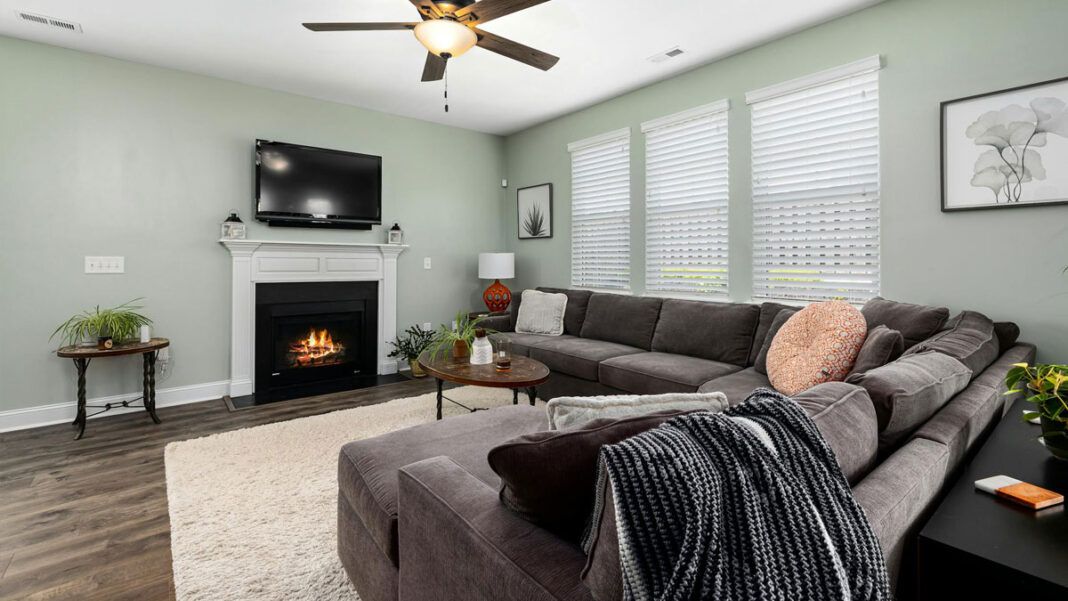There is no right or wrong when it comes to the colors that adorn the walls of one’s home. Aesthetic appropriateness is subjective in home decor. Ideally, one must choose paints that create a cheerful atmosphere inside a house and make them feel positive when they enter the property. Certain tips and tricks can be handy when choosing paint colors for home interiors. Home painting color ideas have helped many homeowners during renovations and refurbishments.
1. Use the 60-30-10 rule for color distribution
Generally, home decor professionals focus on creating a cohesive color scheme in homes while designing their guide to choosing paint colors. Such a color scheme makes one’s home feel unified and artistically designed. A useful way to achieve this cohesion is using the 60-30-10 color distribution scheme. This rule suggests that around 60% of a home should be painted in a dominant color, around 30% in a secondary color, and around 10% in an accent color.
This paint coordination scheme lends a balanced and appealing color cohesiveness to homes. Typically, professionals use this technique and paint the walls of the house using dominant colors, the upholstery or flooring using one or the other secondary colors, and the artwork or accessories in accent colors. This modern paint color scheme ensures that a room’s color palette does not feel underwhelming or overwhelming.
2. Work with a color consultant
There are many professionals within the field of home decor who specialize in specific areas. For instance, a color consultant is trained and experienced in the art and science of choosing the right colors for specific rooms. For those who wish to use a new color scheme in their house and are unsure about the top paint color trends, these professionals can offer them positive solutions. Consultants can provide clients with a generic color template or create a bespoke palette with the best interior paint colors, customized especially for clients with very specific needs. The final decision is based on the homeowner’s requirements.
One needs to ask these consultants the right questions to get the best out of them. Before meeting with them, one can gather inspiration and ideas from external sources and click pictures to show the experts what they need. Consultants will visit homes at certain times during the day to gauge the challenges and lighting patterns of the space.
3. Focus on undertones for interiors
Some people do not wish to include many professionals in home painting and redecoration. Instead, they seek to retain a personal touch while painting their homes. Such individuals can learn more about color undertones and temperatures to get an understanding of which hues look good under what conditions and form the best pair with which other colors.
One of the tips for picking interior paint colors involves having a deep understanding of this concept. Paint is made up of different colors. Home decor contractors mix multiple paints in their cans. One can observe this process of different colors being dropped into the painting cans to know more about each undertone. Warm paints come with color or an undertone of warm colors (yellow and red), while cool paint colors come with an undertone of cool colors (gray, blue, and green). To test the undertone of paint color, users can place one or two swatches of a given paint on a white piece of printer paper and see what the color turns to after a while. If homeowners are satisfied with specific undertones, they can choose them to adorn their home interior.
4. Pay attention to lighting
The way a room is lit plays a big role in how certain paints appear on its walls at different times during the day. Both natural and artificial light dramatically alter how a given paint looks in a room. For example, maroons appear reddish at times and under certain lighting conditions, and they appear much darker, almost blackish, at other times. To get the best results, one can check out the paint colors during morning and night-time in sample images before selecting them.
Further, if certain light fittings make a given paint more alluring on a specific wall, then people can have those fittings attached to their rooms to enhance the look and feel of the colors of their walls.
5. Choose lighter colors for smaller rooms
Color consultants often note that specific kinds of colors look good in rooms of certain sizes. For homes with less space, smaller rooms, and a limited wall area to put color on, lighter shades of paint tend to look aesthetically appealing. For the smallest rooms, color tones such as light blues, greens, and off-whites make the spaces appear brighter, bigger, more cheerful and inviting.
Popular home paint color shades like taupe, earthy tones, alabaster, and pastels also make little spaces look more radiant and larger than they actually are. Ideally, small rooms should avoid deep colors as they make the spaces appear cave-like and cramped. This is one of the reasons why many homes use the color white, the lightest color there is, in small rooms such as the attic and other utility spaces. While white is a solid choice, one must avoid using flashy whites as they can make rooms appear overtly cold and soulless. The safe option is to choose radiant, light colors that are livelier than white.
